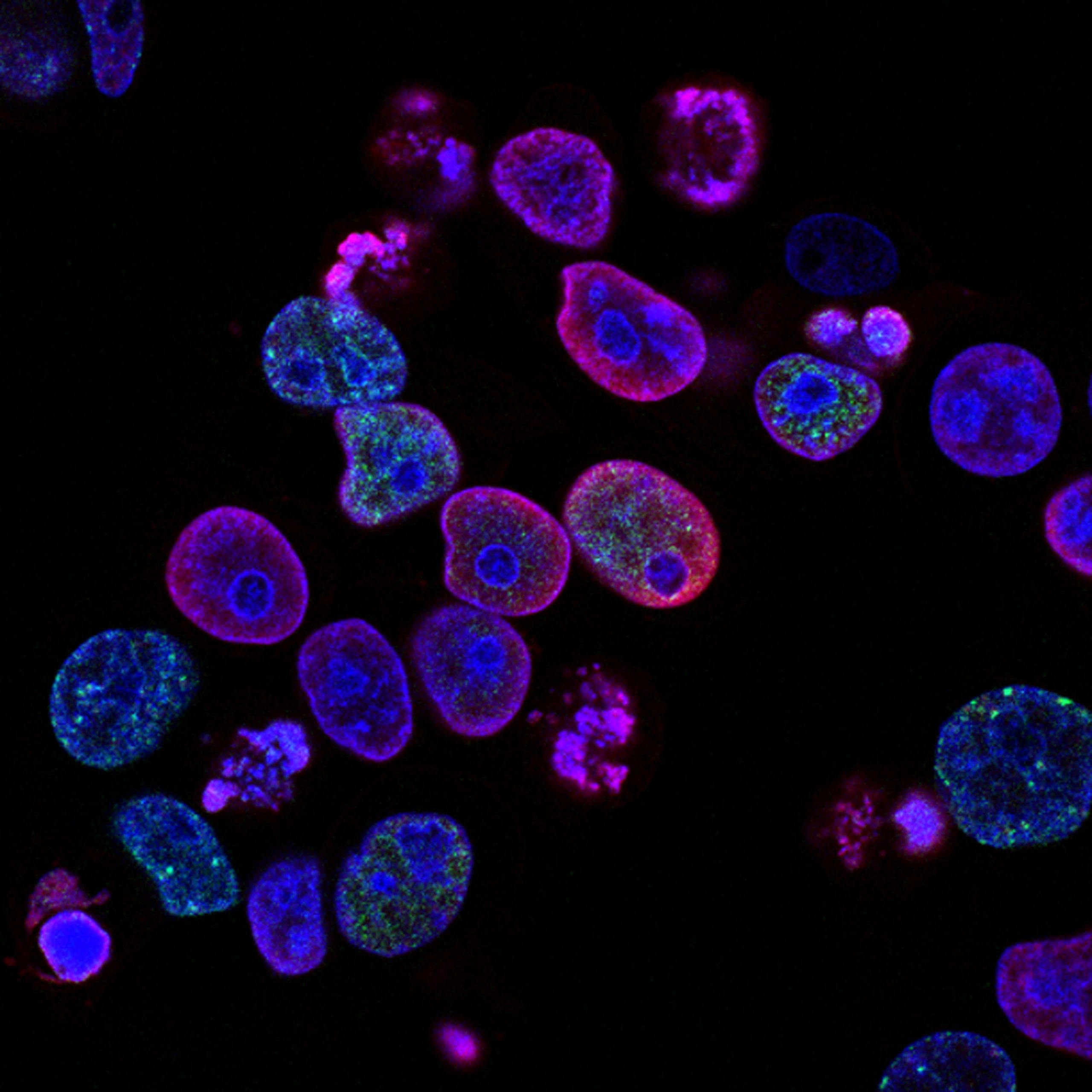Cell phone radiation is harmful to the body. Higher doses produce stronger damaging effects. To
protect the brain and reproductive organs, the Aulterra Neutralizer was tested to determine if the
Neutralizer reduces the intensity of cell phone radiation.
Methodology
Using a Magnetometer, the intensity of cell phone radiation was measured. In the experiments
presented here, the radiation emitted by a Nokia cell phone and a GE cordless phone was measured.
Six separate analyzer graphs of the intensity of the emitted radiation versus frequency were recorded
under each of the experimental conditions defined below.
To allow direct comparison of graphs with and without the Neutralizer, these graphs have the same
intensity scale (y-axis). the third experiment, human voice patterns were used.
Results and Discussion
Experiment #1
A broad spectrum of frequencies radiating from the cell phone were measured. Large discrete peaks
occurred at specific frequencies, e.g. 54, 72 and 94 MHz. In addition, smaller peaks occurred on either side of these main peaks. When the Neutralizer was placed in the phone the side peaks completely disappeared, and the main peak was reduced in size by half. The experiment was done six times with and without the Neutralizer in the cell phone. The average intensity of the 94 MHz peak was 36.4 dBm. With the Neutralizer this peak decreased in size to a value of 17.6 dBm. This 52% (2-fold) reduction is highly statistically significant.

Experiment #2
In these experiments the background was not flat and weak as in previous experiments, but contained several flattened peaks in the same region as previously observed. This indicated the presence of a nearby interfering cell phone in the immediate environment. The efficacy of the Neutralizer to reduce the cell phone radiation is shown in two different frequency regions where the cell phone signal was at least twice that of the background signal.
I. Spectra at 94.5 MHz

Subtracting the background contribution from the signal, the cell phone signal was 21dBm and the
neutralized cell phone signal was 5dBm. This corresponds to a 76% (4-fold) reduction of the signal in
the presence of the Neutralizer.
II. Spectra at 94.2 MHz

In this portion of the EM spectrum, it is clearly visible that the cell phone signal in the presence of the Neutralizer is quantitatively and qualitatively similar to that obtained from the background.
Experiment #3
This experiment was designed to compare the cell phone signal with an open line and the signal when the human voice was being transmitted over the line. In the presence of the Neutralizer, the voice signature was significantly reduced in amplitude.

Experiment #4
The cordless phone generated one peak at 2.48GHz with two smaller side peaks on either side of the
main peak. With the Neutralizer the intensity was reduced to 42.9 dBm. This 30% reduction is
statistically significant. As previously reported for the cell phone, both side peaks associated with
information being transmitted were completely eliminated by the Neutralizer.

Conclusion
The results of these experiments indicate that the Aulterra Neutralizer weakens cell phone and wireless phone radiation by reducing the intensity of their signature frequency peaks. In all experiments, the Neutralizer was effective across the entire radio and microwave spectrum of radiation emitted by these

THE AULTERRA NEUTRALIZER REDUCED THE INTENSITY OF CELL PHONE RADIATION
There is now accumulating scientific evidence that cell phone radiation is harmful to the body.
The cell phone industry has countered these reports by sponsoring their own studies which are
biased in their experimental design to favor conditions expected to show no effects. For
example, most of these studies use single isolated frequencies known to be emitted from cell
phones.
However, studying the biological effects of isolated cell phone frequencies is a reductionist
approach. From a biological point of view, the sensitivity of an organism to an individual cell
phone frequency is very different than the broader complete spectrum of frequencies actually
emitted by cell phones. In addition, experiments are often done using low radiation doses,
referred to as specific absorption rates (SAR). Thus, experiments designed to show biological
damage use doses as high as 100 W/kg. Experiments designed to show no damage use
doses as low as 0.08 W/kg, a 1200 fold lower dose. The fact that higher doses produce
stronger damaging effects is the scientific rationale for using headsets which reduce the
intensity of the radiation by physically placing the cell phone away from the brain.
Unfortunately, this approach just shifts the problem to another part of the body, since these cell
phone users typically wear their phones on the belts, thereby exposing their reproductive
organs to harmful radiation. It was therefore of interest to determine whether the Neutralizer
might reduce the intensity of cell phone radiation.
Methodology
The intensity of cell phone radiation is typically measured using a special type of
magnetometer. Magnetometers measure the overall intensity of the cell phone radiation
across many frequencies comprising the electromagnetic spectrum. In the experiments
presented here, we measured the radiation emitted by a Nokia cell phone (2005) and a GE
wireless 2.45 GHz phone (2002) by placing a cell phone antenna, tuned to the specific
frequencies emitted by these devices, next to the unit while receiving an active transmission.
The signal detected by the antenna was then transferred to a spectrum analyzer. A spectrum
analyzer is a sophisticated magnetometer which can measure the intensity of the cell phone
radiation at each frequency across the entire broad spectrum emitted by the cell phone. It can
also measure the intensity of the radiation at a specific frequency. Six separate analyzer
graphs of the intensity of the emitted radiation vs. frequency were recorded under each of the
experimental conditions defined below. Representative graphs of the background and the
signal with and without the Neutralizer are presented here for each of the experimental
conditions. To allow direct comparison of graphs with and without the Neutralizer, these graphs
have the same intensity scale (y-axis). In some experiments, particularly those with interfering
signals from nearby cell phones, the starting reference baseline values were different. In the
third experiment, human voice patterns were generated by calling the local weather station
which broadcast a recording of the human voice. The experimental conditions for each of the
four experiments reported here are summarized below.

RESULTS AND DISCUSSION
EXPERIMENT #1
A broad spectrum of frequencies radiating from the cell phone could be measured which were
significantly above background fluctuations. Large discrete peaks occurred at specific
frequencies, e.g. 54, 72 and 94 MHz. In addition, smaller peaks occurred on either side of
these main peaks, assumedly due to the information being transmitted over the open line.
When the Neutralizer was placed in the phone the side peaks completely disappeared and the
main peak was reduced in size by half. This reduction in intensity was observed qualitatively at
all main peaks but was also studied quantitatively in detail using the 94MHz peak. The
experiment was done six times with and without the Neutralizer in the cell phone. The average
intensity of the 94 MHz peak was 36.4 ± 1.3 dBm. With the Neutralizer this peak decreased in
size to a value of 17.6 ± 2.5 dBm. This 52% (2-fold) reduction is highly statistically significant
(p < 0.0001)

EXPERIMENT #2
In these experiments the background was not flat and weak as in previous experiments but
contained several flattened peaks in the same region as previously observed, indicating the
presence of a nearby interfering cell phone in the immediate environment. Despite the
presence of this strong environmental noise, the cell phone signal could still be detected above
the background signal. The efficacy of the Neutralizer to reduce the cell phone radiation is
shown in two different frequency regions where the cell phone signal was at least twice that of
the background signal.
I. Spectra at 94.5 MHz

Since in this experiment each box is 7dBm high, the average background value was 45 dBm.
The cell phone signal showed strong peaks reaching a maximum value of 66 dBm. In the
presence of the Neutralizer the same cell phone produced signals with an intensity
corresponding to 50dBm. Subtracting the background contribution to the signal, the cell phone
signal was 21dBm and the neutralized cell phone signal was 5dBm. This corresponds to a
76% (4-fold) reduction of the signal in the presence of the Neutralizer.
II. Spectra at 94.2 MHz

In this portion of the EM spectrum, it is clearly visible that the cell phone signal in the presence
of the Neutralizer is quantitatively and qualitatively similar to that obtained from the
background. It is interesting to note that although the three peaks attributable to the cell phone
are significantly reduced in the presence of the Neutralizer, they can still be made out.
EXPERIMENT #3
This experiment was designed to compare the cell phone signal with an open line and the
signal when the human voice was being transmitted over the line. A high background was
observed indicating the presence of an interfering cell phone. The measured signal from a cell
phone with voice patterns was significantly larger and more irregular (chaotic) than the signal
with an open line. The voice signature is most apparent on the shoulder of the main cell phone
peaks. In the presence of the Neutralizer, the voice signature was significantly reduced in
amplitude.

EXPERIMENT #4
For these experiments, the background noise was weak. The Wireless phone generated only
one peak at 2.48GHz with two smaller side peaks on either side of the main peak. This
experiment was analyzed quantitatively using individual values from the six separate
experiments. In the absence of the Neutralizer the amplitude of this main peak was 61.0 ± 1.64
dBm. With the Neutralizer the intensity was reduced to 42.9 ± 1.16 dBm. This 30% reduction
was statistically significant (p < 0.0001). Thus, the Neutralizer is somewhat less effective at
reducing this peak than the peaks obtained from a cell phone. This is expected since the total
radiation emitted from a cell phone is distributed amongst several frequency bands which are
less intense than the strong peak obtained for the wireless phone. As previously reported for
the cell phone, both side peaks associated with information being transmitted were completely
eliminated by the Neutralizer.

CONCLUSION
The results of these experiments indicate that the Aulterra Neutralizer weakens cell phone and
wireless phone radiation by reducing the intensity of their signature frequency peaks. In all
experiments the Neutralizer was effective across the entire radio and microwave spectrum of
radiation emitted by these devices. This inhibitory effect was also independent of the various
experimental conditions, i.e. whether there were interfering cell phone signals in the immediate
environment or whether there were human voices being transmitted over the line. In some
experimental conditions the neutralized phone had radiation emissions similar to those of the
background ambient noise.
This new data should be taken in conjunction with the previous observation that the Neutralizer
also reduces the damaging effects of cell phone radiation as measured by changes in the
conformation of human DNA. This latter result indicates that the Neutralizer is protecting a key
biological system from the detrimental effect of cell phone radiation. The results from the
present study suggest that the bio-protective effect of the Neutralizer is in part due to the
reduction in the intensity of the offending radiation. The results of both studies taken together
indicate that the Neutralizer protects the body by two different mechanisms, a biochemical
defense response and a physical alteration of the cell phone signal.








